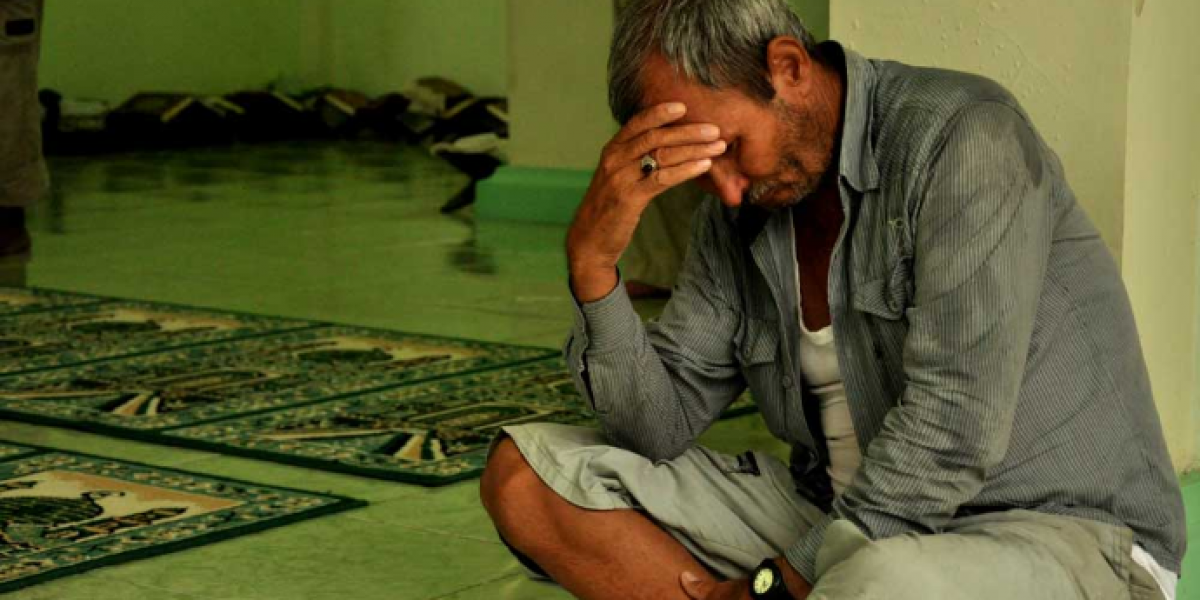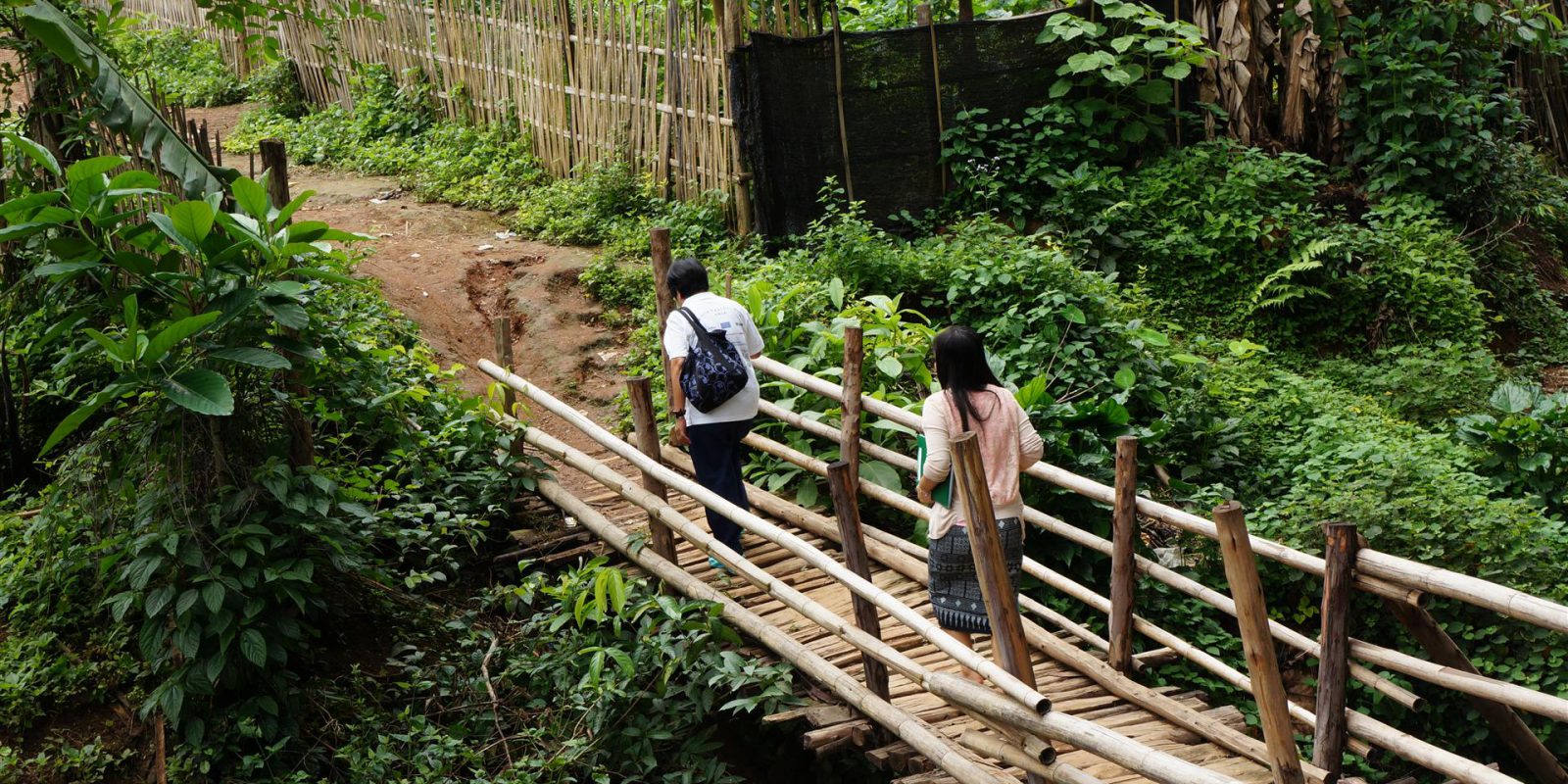Asia Pacific: regional cooperation… an impossible dream?
28 December 2012|Oliver White & Dana MacLean, JRS Asia Pacific advocacy and communications

Bangkok, 28 December 2012 – Millions of refugees and asylum seekers face tough challenges in their struggle to find safety in Asia Pacific. With the lowest number of signatories to the 1951 Refugee Convention in the world, this region* offers paltry protection to people on the move. The glaring absence of national asylum laws and standardised procedures for refugee status determination has driven asylum seekers underground.
Asia Pacific is home to some 10.6 million forcibly displaced people. They are on the move for different reasons: seeking economic survival or reunion with their families, fleeing human rights violations. But their movements are marked by the same defining factors: fear; dangerous journeys, often by boat; being smuggled and vulnerable to trafficking; the risk of indefinite detention.
Stemming pull factors. In recent years, Asian states have increasingly sought to seal their borders by stemming pull factors, resorting to detention and making it difficult to file asylum claims. Asylum seekers are driven underground, where they are exposed to exploitation and hazardous conditions, and denied access to health care, work, food, shelter and education.
But the push factors forcing people to leave their homes are always stronger so curbing the pull factors only leads to greater human rights violations and despair. Mahmoud, an Afghan asylum seeker detained in Indonesia, is one victim of this hostile approach. “I would rather be shot than wait for this process to keep going indefinitely with no idea what is happening,” he said. “I don’t want to spend my life in this prison”. Nowhere is safe. Police in Malaysia arrested David, from Burma, three times. “I don’t have a UNHCR card and they told me and my friends they could do what they wanted to us. They stole 200 ringgit [local currency] from my wallet and my telephone”.
Promoting regional collaboration. In recent years the region has seen increasingly large-scale displacements. Armed conflict in Afghanistan, Myanmar and, until mid-2009, in Sri Lanka, persecution of ethnic minorities in Vietnam and ongoing oppression of the Rohingya have continued to push people towards Australia. Transit countries along the way include Thailand, Indonesia and Malaysia.
The need for cross-border and regional collaboration has never been greater, and the last few years have seen a rising interest in such collaboration. The Association of Southeast Asian Nations (ASEAN) has proven to be an inadequate space to encourage the protection of refugee rights. Under the Bali Process, a grouping of over 50 states and international organisations working to address people smuggling and trafficking, UNHCR has promoted a Regional Cooperation Framework to be used as a guide for states to collaborate on migration issues. But although it has been well received, the framework is non-binding.
One of the few examples of bilateral cooperation has been the Regional Cooperation Model, signed in 2001, between Australia and Indonesia in collaboration with the International Organisation for Migration (IOM). The aim is to support asylum seekers and refugees to prevent them from onward movement to Australia. But such agreements fail without the involvement of other host, transit and resettlement countries.
As one of the most developed countries in the region, Australia offers the best capacity to protect refugees, but national security interests and domestic politics have undermined its ability to lead by example. Recent decisions to embark on offshore processing of asylum seekers in Nauru and Manus defy the country’s obligations under the 1951 Refugee Convention and may seriously jeopardise refugee rights. Nearly 90% of people arriving by boat are convention refugees, according to the Refugee Council of Australia.
Australia has found a legal loophole by excising its territory – excluding parts from its migration zone – in order to bypass its responsibility to process asylum seekers arriving by boat. But it is doubtful that the new policies will stop people from arriving because the problem lies in the lack of durable solutions for refugees elsewhere in the region. An Afghan refugee in Indonesia said: “I know it’s a dangerous journey, and I don’t want to put myself and my family at risk at sea, but it’s not a choice. If you give me and my family the right to work here, then we will stay here”.
The way forward. Cooperation, consistency and subscribing to universally accepted standards of protection are the way forward to ensure more equitable burden sharing for states and to protect refugees transiting through Asia Pacific. Standardising procedures means refugees will face the same treatment, no matter where they go, and increasing protection in transit countries such as Thailand, Malaysia and Indonesia will reduce the need for onward movement.
The Comprehensive Plan of Action (CPA) initiated in the 1980s as a response to the deaths of thousands of Vietnamese in boats at sea facilitated durable solutions for Indochinese refugees, who were processed in transit countries and either resettled in the US, Australia and Canada or repatriated. Although far from perfect, the CPA exemplifies that regional cooperation is possible if the political will is there.


